Review: 2013 Nissan Altima
Eleven years ago, Nissan’s Altima became a major player in the midsize sedan segment on the basis of three things: bold styling, a roomy rear seat, and a stonkin’ 3.5-liter V6 engine good for 240 horsepower (the competition used 3.0L V6s that topped out at 200 horses). The 2007 model year redesign tamed the exterior, compacted the interior, and replaced the conventional automatic with a CVT. Nissan shifted even more of them. With the redesigned 2013 Altima, Nissan will be happy if potential buyers learn only one thing about the car, its EPA rating of 38 MPG highway. No one else’s midsize sedan comes close without burning oil or discharging batteries. But you don’t want me to stop here, do you?
It costs over a hundred million dollars to procure new sets of stamping dies for a high volume model like the Altima. What did Nissan get for its massive outlay? The metal fab folks are very proud of the depth of the stampings for the new Altima—the trunk lid sets a new company record! Passersby failed to notice the new trunk lid. Or the rest of the new metal, for that matter. Look closely, though, and the exterior styling includes some interesting details, such as the way the headlights stand proud of the fenders when viewed from the rear. A swage line that takes off from an oversized grille then undulates outward as it moves rearward will dominate the body sides of many upcoming Nissans, but it doesn’t quite manage to integrate the curvaceous front clip with the relatively square body that follows it. One fussy detail lifted from the Maxima: wake-like depressions around the door handles. The relationship between the arrowhead headlight clusters and the emphatically circular front wheel well opening is, shall we say, unresolved. Of course, typical midsize sedan buyers won’t look closely, and so won’t notice these details any more than they will the trunk lid stamping. In person, the new Altima looks less special than it does in many of these exterior photos (all of which are of the big-rimmed V6). Hyundai and Ford are fielding more immediately eye-catching designs.
The 2002 Altima had one big weakness: an egregiously cheap interior. A 2005 refresh and 2007 redesign brought welcome upgrades, but left the cabin well short of best-in-class. The 2013 redesign elevates the interior another notch or two, most notably through a wider console and upgraded controls. Just opt for black; the tan clashes with the motley assortment of silverish trim pieces. Regardless of interior color the chunky silver metallic trim that frames the center stack should have been left in the Toyota it was lifted from. But is the IP soft to the touch? Partially. The face is cushy, the top is hard. An intelligent, cost-effective solution, but not nearly as artfully executed as in the Buick Verano. On the other hand, ergonomics are better than the current average, with easy to reach knobs for major functions.
Open the door and drop into one of the things that make this “the most innovative Altima ever”: NASA-inspired “zero gravity” front seats. With one notable exception, I found them very comfortable, with a substantial feel and a fit like a baseball glove. (My co-driver’s impressions were less positive. With seats, opinions are bound to vary.) The one exception: the headrests jut so far forward that I removed them and reinserted them backwards (a safety-compromising trick I first employed in a then-new 2004 Malibu). Nissan apparently doesn’t belong to the pillbox school of automotive design, so visibility is pretty good all around.
Those troubled by the de rigueur high deck can opt for the SL’s Tech Package. This package includes an innovative rearview camera that handles blind zone warning, lane departure warning, and motion detection in addition to washing and drying itself. The lane departure system was a bit slow to sound the alarm in some cases, a bit too quick in others, but who would have thought they could provide all of these features via a single rear-facing camera? You no longer have to be rich to be beeped at every few seconds, just a touch sloppy behind the wheel.
Rear legroom and trunk volume aren’t best-in-segment, but they’re not too far off. As is often the case with sweeping coupe-ish rooflines, headroom is in shorter supply than legroom. People over 5-11 will become familiar with the headliner. Rear air vents are included with the SV and SL.
The 3.5-liter V6 is carried over, so its output remains 270 horsepower. The 2.5-liter four gets a modest bump from 175 to 182 horsepower. As with the exterior styling, Nissan has left costly turbocharging and direct injection to Ford and Hyundai. The continuously variable transmission (CVT) received much more attention. A thorough revamp reduced internal friction by 40 percent and widened the ratio spread (with the four) to 7:1, about even with an eight-speed automatic and enabling the engine to loaf at 1,450 rpm at 60 mph. Combine this with a 79-pound curb weight reduction (to a compact-like 3,108 pounds), and you get the highly touted 38 mpg EPA highway figure, and 27 in the city, way up from 32 and 23 with the 2012. The next-best Camry manages only 25 city / 35 highway. My right foot spent too much time near the floor to judge how achievable these figures will be in the real world.
Nissans claims that an independent tester got the four-cylinder Altima to sixty in 7.14 seconds. My butt-meter registered mid-to-high eights, and that with the all-too-typical big four commotion under the hood. If you want anything resembling pleasurable performance, you’ll fork over another two or three grand and take a fuel economy hit (to 22/31) to get the much more energetic V6. With the six you also get shift paddles through which you can force the CVT to mimic a quick-shifting seven-speed automatic. In general, though, I didn’t mind the operation of the mandatory CVT, especially not when paired with the V6. Floor the go pedal and the CVT gradually ramps the engine up its 6,000 rpm power peak, then holds it there. Very smooth, and with little if any of the dreaded “rubber band” effect that typified early CVTs.
Nissan claims that the 2013 Altima is “the most engaging product in the segment”. Perhaps, but then midsize sedans comprise a uniformly soporific segment. With this positioning (and perhaps cost) in mind, Nissan has fitted the 2013 car with electro-hydraulic rather than pure electric steering. The feel through the wheel is nevertheless light and well-insulated, and not as quick or as direct as that through the Maxima’s smaller diameter tiller. Last year the V6 was only available in sport-suspended SR trim. This year it’s offered as an S, SV, or SL, but not as an SR. There’s also no Sport Package. Perhaps Nissan felt the standard car behaved well enough without one? Throw the V6 sedan hard into a curve and it toes the line with moderate body roll and minimal plowing. The latter is allegedly curbed by brake-activated “active understeer control”, another of the features that (along with a uniquely jointed rear suspension lower H-arm) make this “the most innovative Altima ever”. This feature is intended to operate transparently. It did.
Suspension tuning is much the same with the four, but its higher profile tires quickly lapse into a mushy scrub. For cornering as much as straight line performance, the V6 with its 235/45VR18 performance tires is clearly the way to go. Yet, aware that the great majority of midsize sedan buyers care little for performance or handling, Nissan projects that only ten percent will go this way. The 2013 sedan’s ride is fairly smooth, well-damped, and quiet with either tire, a notable improvement over past Altimas and quite an achievement given the low curb weight. A 2013 Malibu is cushier and quieter, but it also weighs a quarter-ton more and handles like a parade float.
Eager to pass the Camry in sales, Nissan has trimmed the Altima’s price (when comparably equipped) by a couple hundred dollars. The base four starts at $22,280. An SL V6 with the $1,090 Tech Package lists for $31,950. I haven’t yet input the 2013 prices and features into TrueDelta’s price comparison tool, but a comparison of 2012s suggests that a Hyundai Sonata will continue to be about $1,500 less before adjusting for feature differences, and about $2,500 less afterwards. A Toyota Camry will continue to undercut the Altima by a few hundred dollars with the four and by over a thousand dollars with a loaded V6. This is comparing sticker prices; compare invoice prices and the Camry’s price advantage can grow to over $2,000.
The 2013 Nissan Altima isn’t cheap, and it doesn’t stand out from the crowd aside from offering the highest EPA numbers and (only on a fully loaded car) a multi-talented rearview camera. But even without these USPs and in its sixth year the current Altima has been outselling every other car except the recently redesigned Camry—and it hasn’t been far behind the Camry. If you were at Nissan, would you want to be the person whose “bold move” derailed the gravy train? If something has been working well, and especially if there’s no obvious reason why it has been working so well, you don’t futz with it. For the most part, Nissan hasn’t.
Nissan provided airfare to Nashville, a very nice hotel, regional cuisine, all we could drink (one writer for a major magazine missed the drive; when security entered his room at noon they found him passed out on the superlative bed still fully clothed), outstanding musical entertainment at the Loveless Cafe, a tour of the Jack Daniels distillery (skipped as I’d already seen too much alcohol, an error I won’t soon repeat), many friendly smiles, and insured, fueled automobiles.
Michael Karesh owns and operates TrueDelta, an online source of automotive pricing and reliability data.
Michael Karesh lives in West Bloomfield, Michigan, with his wife and three children. In 2003 he received a Ph.D. from the University of Chicago. While in Chicago he worked at the National Opinion Research Center, a leader in the field of survey research. For his doctoral thesis, he spent a year-and-a-half inside an automaker studying how and how well it understood consumers when developing new products. While pursuing the degree he taught consumer behavior and product development at Oakland University. Since 1999, he has contributed auto reviews to Epinions, where he is currently one of two people in charge of the autos section. Since earning the degree he has continued to care for his children (school, gymnastics, tae-kwan-do...) and write reviews for Epinions and, more recently, The Truth About Cars while developing TrueDelta, a vehicle reliability and price comparison site.
More by Michael Karesh
Latest Car Reviews
Read moreLatest Product Reviews
Read moreRecent Comments
- Zipper69 Alfa Romeo Europa
- MGS1995 I wish my hybrid was a plug in hybrid but I’m not interested in an electric only vehicle. I’m in a rural area which probably will be late in getting the needed infrastructure.
- FreedMike Um, OK. EVs are just cars, folks. I have no idea why they take up so much rent-free space in some folks' heads.
- Analoggrotto *What's the most famous track you have driven on while Hyundai foots the bill?
- 2ACL I'm pretty sure you've done at least one tC for UCOTD, Tim. I want to say that you've also done a first-gen xB. . .It's my idea of an urban trucklet, though the 2.4 is a potential oil burner. Would be interested in learning why it was totaled and why someone decided to save it.



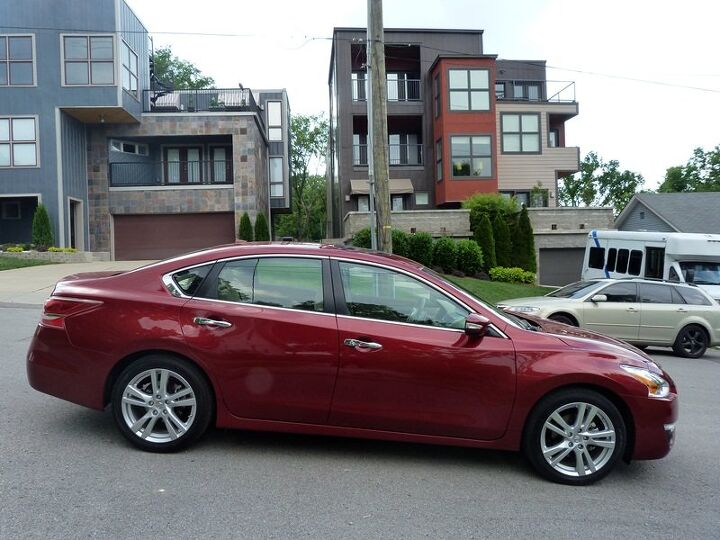
































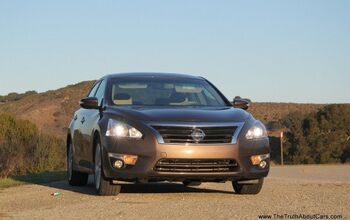
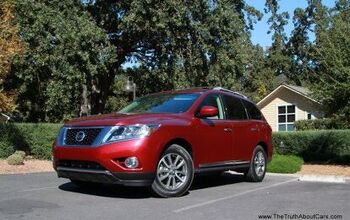
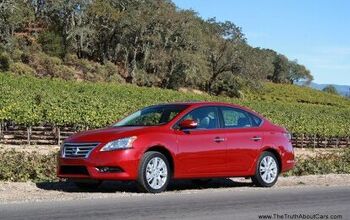
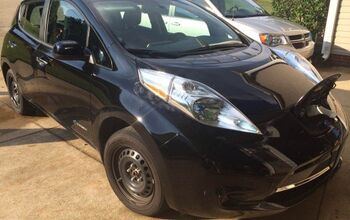
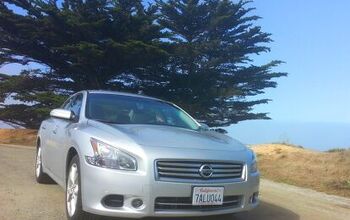
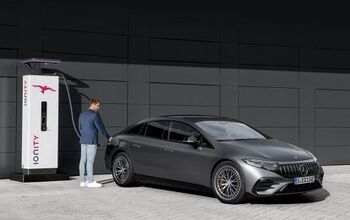









Comments
Join the conversation
I recently test-drove this car for about thirty miles. Here's my impression relative to the current-gen Maxima: - Noticeable upgrades to the CVT. Much better coasting at highway speeds. Doesn't lug in that 1200-1400 RPM area like the Max around town; usually at 2000 RPM. If you force it to lug, it still has extra vibration and resonance in that range relative to an automatic, but noticeably less than the Max. RPM at 60 MPH was 1700 (Maxima does 1900). Sport mode still has pretend-shifts. - Suspension is a little stiffer than the Max, a bit less travel. Corners flatter. Road feel through the wheel is about the same, though steering effort is lighter at high speed. Despite a similarly subtle centering reflex, the car doesn't wander like the Maxima. Arrow-straight on the highway with hands off the wheel. Sales guy said it had something to do with more camber and the rear suspension design. - Brakes have better modulation and a firmer pedal that bites higher in the travel. I didn't experience the subtle grabbing approaching a stop as I have with the Maxima and G37. - Wind noise is a bit higher. Sightlines are very similar. The old Altima felt very upright with tall pillars and a bigger greenhouse. - Interior build quality and materials are mostly equal or better than my Maxima S. Soft-touch dash material isn't as soft. Build tolerances are excellent. The armrest/cupholder area has a better layout, as does the tach section. The driver's seat is a different design than the Maxima (front cushion moves independently now), but equally comfortable. The back seat is significantly more comfortable. - Materials in non-key areas (e.g., the trunk) aren't as good. Trunk has exposed speakers, no pull handle, and gooseneck hinges. - In terms of general feel, the Altima seems a little smaller, lighter and sharper. Acceleration is very similar flat-out, but the Altima is more willing to rev, so it feels more sprightly around town. So, very impressive work from Nissan. This is outright better car than the Sonata and the Optima in turbo guise. I'm curious to try the V6 Passat, the new Ford, and the new Honda. I doubt anything else in the class can keep up.
It was very nice of Nissan to spring for the hotel room, airfare, drinks and all of the other nice perks that helped them get a nice review of the 2013 Altima. The truth about Nissan is that the company doesn't stand by its automobiles and certainly doesn't give it's customers what it gave Michael Karesh et al. I have a 2008 Nissan Altima Hybrid. I've just learned it needs a cylinder head replacement at a minimal cost of $4,500. I haven't made the last payment for this car. Carbon buildup due to improper discharge is why the cylinder head needs to be replaced. This problem has been known to Nissan for years and they've acknowledged in an internal bulletin that it is occurring in at least one in four Nissan Altima Hybrids. My Altima is within the five-year warranty period, but has 64,000 miles on it so falls just outside of the 60,000 mile warranty period. I contacted Nissan and requested they make the repair under the warranty. They refused. They also have failed to order a recall despite acknowledging a widespread defect in the manufacture of the Nissan Altima Hybrids. I won't buy another Nissan again or any automobile manufactured by a company that won't stand by it's cars and won't do right by its customers.